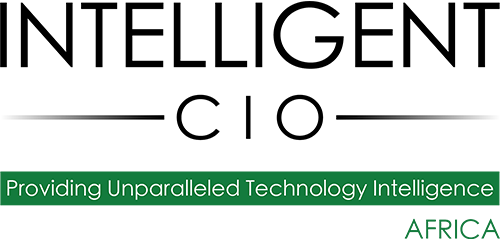AECI, one of South Africa’s largest chemicals groups, turned to SAP when it needed to deploy an integrated people management platform to overcome the challenges of a lack of group level visibility and agility for it 7,000 employees over multiple geographies.
Managing a large and diverse workforce is challenging at the best of times, but for one of South Africa’s largest chemicals groups, a combination of disparate systems and multiple geographies over its more than 7000 employees left it without group level visibility and agility needed to maximise the potential of all growth opportunities and the long-term benefit of an integrated people management platform.
“We had a number of disparate HR and payroll systems across 16 different Group businesses across 24 countries,” said Tania Naudé, Group Head: Organisational Design, Development and Human Capital Services at AECI.
“We implemented Employee Central using the SAP S/4HANA cloud integration and went live with our system – which we named AECI-connect – on March 1 2019 in South Africa. Further deployments took place across Africa during 2019 and will be followed by international deployments that will take place in 2020. To date, we have a 98% adoption rate, which is amazing for a programme of this nature.”
AECI is a diversified group of 16 companies. It has regional and international businesses in Africa, Europe, South East Asia, North America, South America and Australia. Products and services are provided to a broad spectrum of customers in the mining, water treatment, plant and animal health, food and beverage, infrastructure and general industrial sectors.
The group’s headquarters are in Sandton, South Africa and it has over 7000 employees spread globally. AECI has been listed on the JSE since 1966 and its revenue for the 2018 financial year to 31 December was R23,3 billion.
Redesigning the human capital operating model
According to Naudé, the aim of the programme was to redesign the entirety of AECI’s Human Capital Operating Model across all the group’s businesses.
“Our new system launched with a range of primary functionalities, such as Employee Central Core, Position Management, Time-Off, Job Profile Builder, and Global Benefits management, with integration to payroll, in an intuitive and easy-to-access way for employees and management,” said Naudé.
“Our objectives were clear: launch an integrated platform to facilitate global employee engagement through making common access points available at all sites, ensuring each and every AECI employee has access to technology. Furthermore, we wanted to create a single source of employee data, ensuring informative business reporting, alignment and standardisation of processes, facilitated by an operating model that allowed HR to focus on strategic business partnering – all underpinned by good governance.”
Naudé and her team followed their own bespoke implementation methodology based on business requirements and principles from Prince 2 and SAP Activate, supported by Britehouse as technical implementation partner.
“We followed a comprehensive business engagement and change management approach to ensure leadership alignment with the direction of the programme,” said Naudé. “The programme was governed throughout by a steering committee consisting of the full executive team as well as several senior managers. Having the Chief Executive, Mark Dytor, as the programme sponsor ensured the necessary buy-in and support for a programme of this magnitude.”
A 12-month development cycle was allocated to the Human Capital Management Solution (HCMS) programme before its initial launch in South Africa. To facilitate meeting the deadline and cost management, an internal team was allocated to oversee business engagement, training, governance, master data, reporting, payroll, and general process activities. An external team from Britehouse handled the technical configuration.
Minimal customisation reduces cost and complexity
The system launched in a predominantly ‘vanilla’ state with minimal customisation to minimise future impact when new releases are implemented and to manage business scope creep.
“A formal change request procedure was implemented, and all requirements considered against a ‘must-have’ and ‘like-to-have’ checklist as critical requirements,” said Naudé. “Changes were further divided into two groups, of which some were actioned against annual IT maintenance allocations with the support partner.”
To further assist with the launch of the HCMS programme, Naudé compiled a Project Initiation Document intended to be as comprehensive as possible, laying out all of the business requirements, objectives and deliverables to be achieved.
As part of alignment, this PID was signed-off by the group executive and all senior managers. An Employee Master Data clean-up and migration was initiated during the early days of the project to ensure all data that would move to the new system has been sanitised well before it launched.
Enabling scalability and agility
“The Employee Central global design was built on and launched as part of the go-live in South Africa; most of the international requirements were gathered and launched during this phase. As the international phases roll out, the benefits will continue to grow in terms of consolidating and streamlining data sets, processes and governed payrolls. AECI is now able to manage all employee basic administration and payroll components from one integrated platform,” said Naudé. “We have launched the HCMS programme with scalability and flexibility in mind, and can add a range of new, essential features to the system for the future benefit of all employees.”
AECI is also looking to launch SAP Analytics Cloud for Human Capital later in 2020, which will pull together information from the various platforms. The company also plans to integrate Learning Management and Performance and Goals during 2020, to further assist in driving employee engagement and development. Onboarding is also part of the current roadmap.
“This has been a people-empowering journey for our group, as for the first time we have employees who can apply for leave online and view their payslips irrespective of where they are based, be this at corporate offices or the remotest mine site in any of our countries of operation,” said Naudé.
“Thanks to the great support we received from our internal IT team, our EXCO, our partners and a resilient business team, we are now able to deploy new HR functionality that will become a powerful business tool for our on-going growth and success.”
Cameron Beveridge, Regional Director for Southern Africa at SAP Africa, said AECI has established a powerful foundation from which to build out market-leading HR and talent capabilities.
“By integrating the latest SAP SuccessFactors technology with our powerful S/4HANA Cloud, AECI has established the groundwork for building Intelligent Enterprise capabilities that will provide it with the power to better manage and engage its large talent base,” he said. “This is one more example of how organisations are leveraging the latest SAP technologies in the service of making the world run better.”


